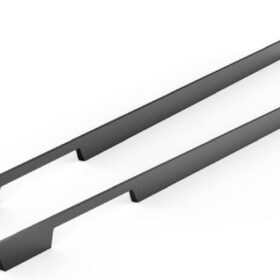Ensuring Compliance with Industry Standards Using Kitchen Counter Handles
Kitchen counter handles play a crucial role in ensuring compliance with industry standards for safety, accessibility, and user experience. By adhering to these standards, businesses can create kitchens that are both functional and compliant, protecting the well-being of users and meeting regulatory requirements.
Safety
Kitchen counter handles must meet specific safety standards to prevent injuries and accidents. These standards include:
Safe Grip:
Handles should provide a secure and comfortable grip, preventing slips and falls.
Rounded Edges:
Sharp edges can cause cuts and lacerations, so handles should have rounded corners to eliminate potential hazards.
Non-Porous Surface:
Handles should have non-porous surfaces that are easy to clean and disinfect, reducing the risk of bacterial growth.
Accessibility
Kitchen counter handles should be accessible to individuals with various abilities, including those with disabilities. Accessibility standards include:
Clearance:
Handles should provide adequate clearance for hands to comfortably grip them, even for individuals with limited reach.
Lever-Style Handles:
Lever-style handles are easier to operate than knobs, especially for individuals with limited hand strength or dexterity.
Color Contrast:
Handles should have a contrasting color to the countertop to enhance visibility for individuals with low vision.
User Experience
Kitchen counter handles contribute to the overall user experience of a kitchen. They should be:
Comfortable to Grip:
Handles should be ergonomically designed to provide a comfortable grip, reducing strain and discomfort during extended use.
Durable and Long-Lasting:
Handles should be made from durable materials that can withstand regular use and wear and tear.
Aesthetically Pleasing:
Handles should complement the overall design of the kitchen, enhancing its aesthetic appeal.
Compliance Process
To ensure compliance with industry standards, the following process should be followed:
Review Regulations:
Become familiar with the relevant industry regulations and standards governing kitchen counter handles.
Select Compliant Handles:
Choose handles that meet the specified safety, accessibility, and user experience requirements.
Document Compliance:
Maintain documentation to demonstrate compliance with all applicable standards.
Regular Inspection and Maintenance:
Regularly inspect handles to ensure they are in good condition and perform as intended.
Benefits of Compliance
Adhering to industry standards for kitchen counter handles provides numerous benefits, including:
Enhanced Safety:
Reduced risk of accidents and injuries.
Improved Accessibility:
Greater usability for individuals with disabilities.
Positive User Experience:
Increased comfort, convenience, and aesthetic appeal.
Regulatory Compliance:
Avoidance of fines and penalties.
Enhanced Reputation:
Demonstration of commitment to safety and quality.
-
2024-11-29Top Trends in Modern Kitchen Cabinet Pulls for 2024
-
2024-11-28The Ultimate Guide to Modern Kitchen Cabinet Pulls- Materials, Styles, and Tips
-
2024-11-27Elevate Your Kitchen Design with These Must-Have Modern Cabinet Pulls
-
2024-11-26Sleek and Stylish- The Best Modern Kitchen Cabinet Pulls for a Contemporary Look










